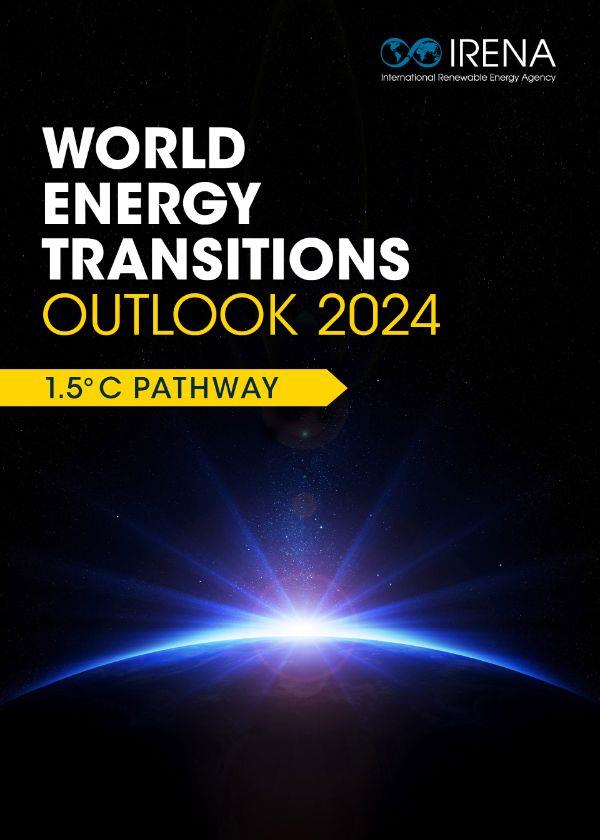Released at the opening of the UN Climate Conference COP29 in Baku, Azerbaijan, the Agency’s 1.5°C Scenario outlines a net-zero path by midcentury, offering a framework for governments to develop energy transition strategies that better align energy planning with climate policies to channel investment.
The Outlook shows that current country pledges could cut global energy-related CO2 emissions by 3% by 2030 and 51% by 2050. Achieving the global goals of tripling renewable power capacity and doubling energy efficiency by 2030, as agreed at COP28, would keep the energy transition on track for net-zero emissions by 2050. These 2030 targets are crucial to limiting global temperature rise to below 1.5°C, as underscored by the UAE Consensus.
However, a significant gap remains between political announcements and actual county plans and policies. National plans and targets are set to deliver only half of the required growth in renewable power by 2030. Investments in renewable power, grids and flexibility, energy efficiency and conservation?must increase dramatically to meet the renewable energy and efficiency goals, totalling USD 31.5 trillion from 2024-2030.
There are also large geographical disparities in terms of renewable additions and investments, causing inequalities in the global energy transition. While renewable investment has generally been on the rise, it remains concentrated in a few countries, leaving much of the Global South behind.
Moreover, with over 70% energy supply, fossil fuels continue to dominate the energy mix in several of the biggest economies, the world’s largest CO2 emitters. To meet the 1.5°C target, the G20 must triple its installed renewable power capacity by 2030, reaching 9,400 gigawatts (GW), and expand it seven-fold by 2050 to 24,900 GW, compared to 2023 levels.
Under IRENA’s 1.5°C Scenario, renewable energy sources would provide the bulk of the power mix, accounting for 68% and 91% of the total electricity supply by 2030 and 2050, respectively. By 2050, a deep transformation of the power and end-use sectors is required to enable the high shares of renewable energy required by the transition.
Globally, the expansion of renewable electricity will facilitate the transition away from fossil fuels in the power sector. Fossil fuels will significantly shrink from a dominant share of 61% in the global power generation mix today, to 24% by 2030 and further to 4% by 2050.
Transitioning the current power system from fossil fuels to renewables requires stronger and more flexible power grid networks. This can be provided by energy storage solutions, demand-side management, and sector coupling technologies and strategies. Particularly, energy storage is one technical key enabler towards a fully decarbonised, 100% renewable power system.

As countries prepare for the third round of NDCs in 2025, it is crucial that they better align with national energy plans and net-zero targets. IRENA is already working with 101 Parties of the Paris Agreement on the upgrade and implementation of NDCs. Coherent national energy and climate strategies facilitate transparency, attract investment, and accelerate the transition to a low-carbon, resilient economy.
International collaboration can secure the significant increase in finance needed for a just transition that maximises socio-economic benefits. This could be facilitated by new sources of funding such as the global wealth tax championed by this year’s G20, emphasising equity, social or environmental responsibility.
There is also a need for huge amounts of public finance to de-risk projects in high-risk countries and fund crucial infrastructure. Such funding could in part come from a reduction in fossil fuel subsidies.
World Energy Transitions Outlook 2024
IRENA’s 1.5°C Scenario, set out in the World Energy Transitions Outlook, presents a pathway to achieve the 1.5°C target by 2050, positioning electrification and efficiency as key transition drivers, enabled by renewable energy, clean hydrogen and sustainable biomass.

Despite the commitments made at COP28 in Dubai in 2023 – including the call on parties to triple renewable power capacity and double the rate of energy efficiency improvement by 2030 – and new initiatives from both the G20 and G7, the energy transition remains off track. Fossil fuels continue to dominate the energy mix in major economies, and each year the chances of meeting the goals of the Paris Agreement become increasingly remote.
The success achieved this decade in reducing greenhouse gas emissions will determine whether global temperature rise can be limited to 1.5°C of pre-industrial levels this century. IRENA’s 1.5°C Scenario, set out in the World Energy Transitions Outlook, presents a pathway to achieve the 1.5°C target by 2050, positioning electrification and efficiency as key transition drivers, enabled by renewable energy, clean hydrogen and sustainable biomass.
The 2024 Outlook provides an overview of progress by tracking implementation and gaps across all energy sectors, and identifies priority areas and actions based on available technologies that must be realised by 2030 to achieve net zero emissions by mid-century.
The report identifies three key pillars that form the foundations for the actions needed to realign the global energy transition with climate objectives: building the necessary infrastructure; advancing a policy and regulatory architecture that can facilitate targeted investments, and improve socio-economic and environmental outcomes; and the strategic realignment of institutional capacities to help ensure that skills and capabilities match an energy system that integrates a high share of renewables.